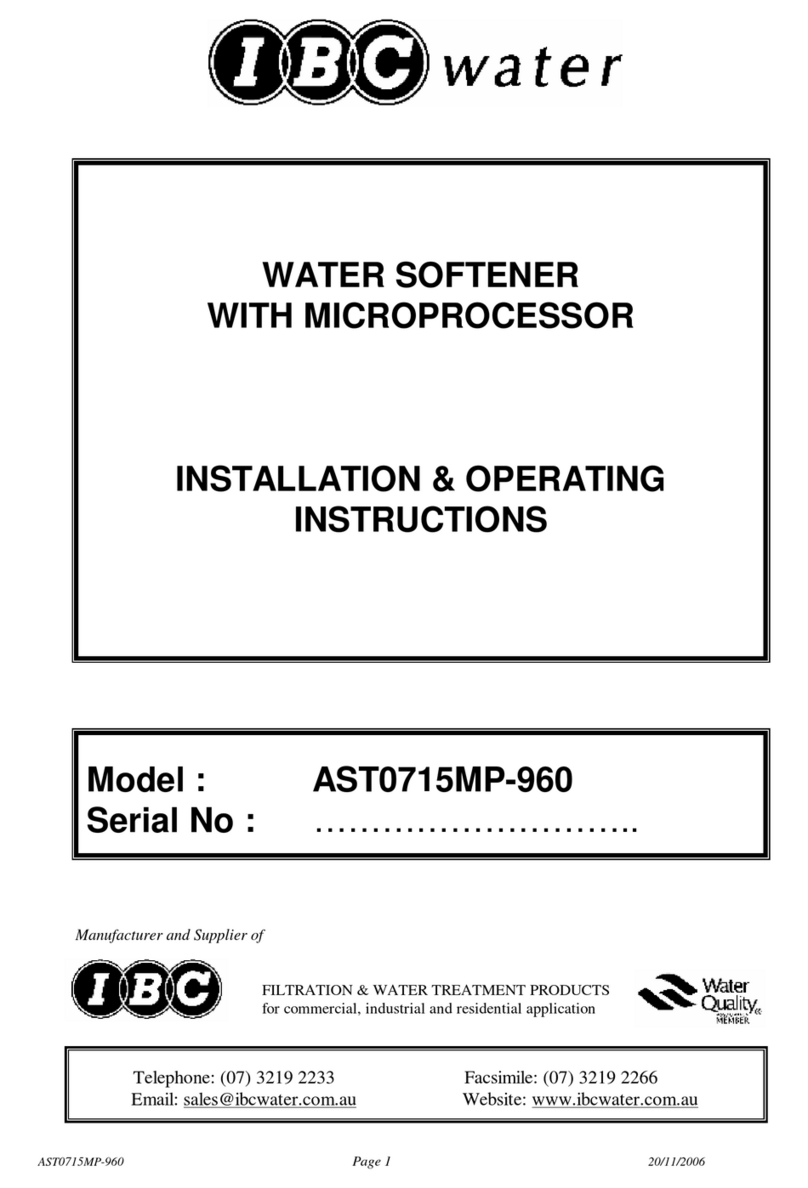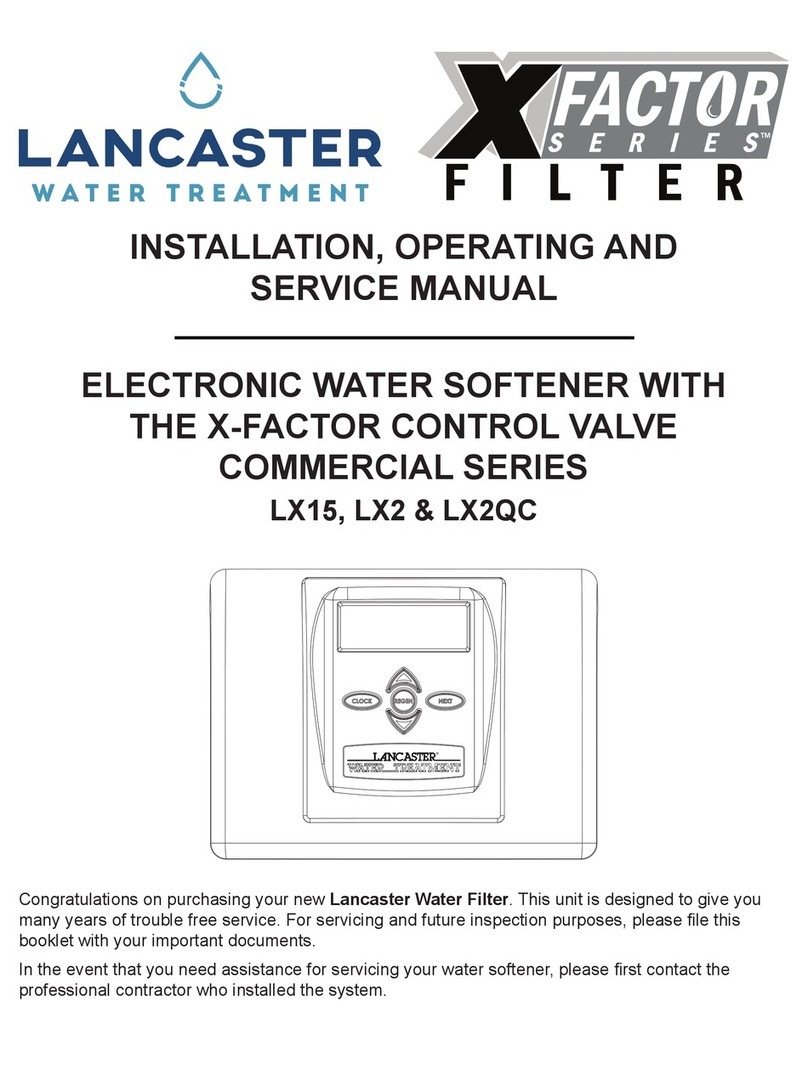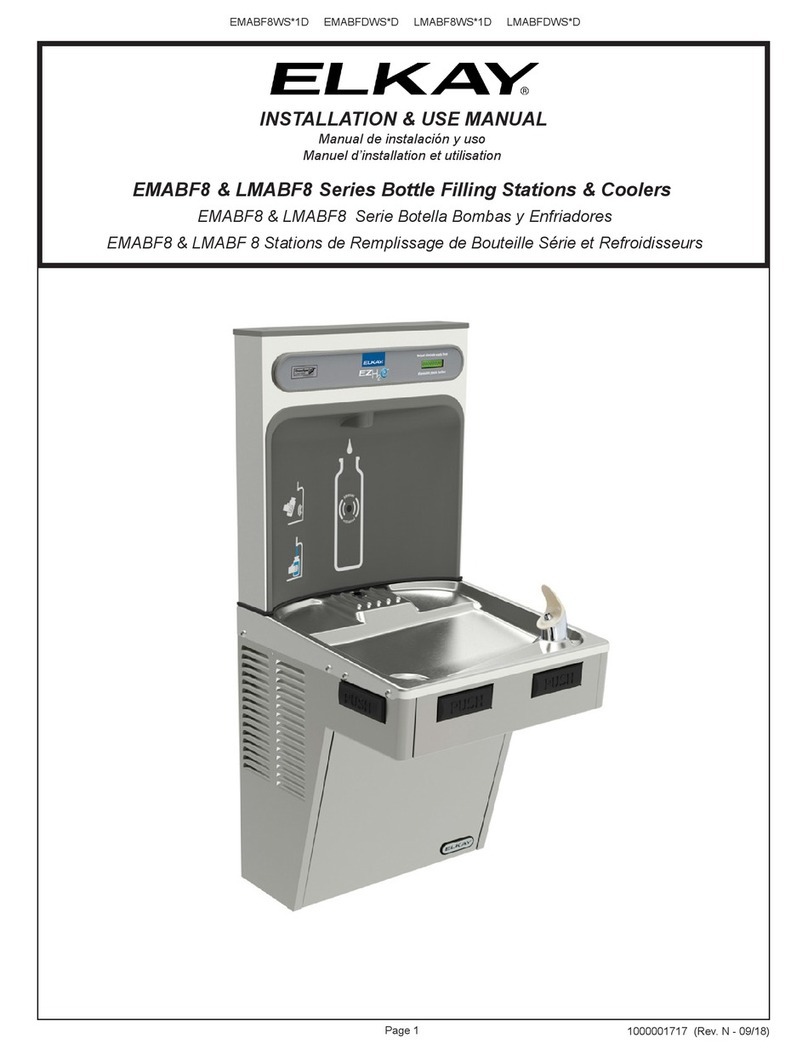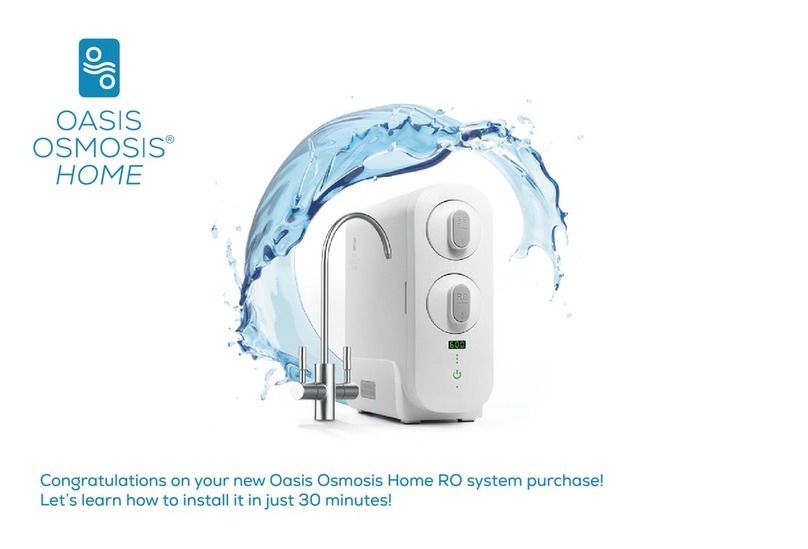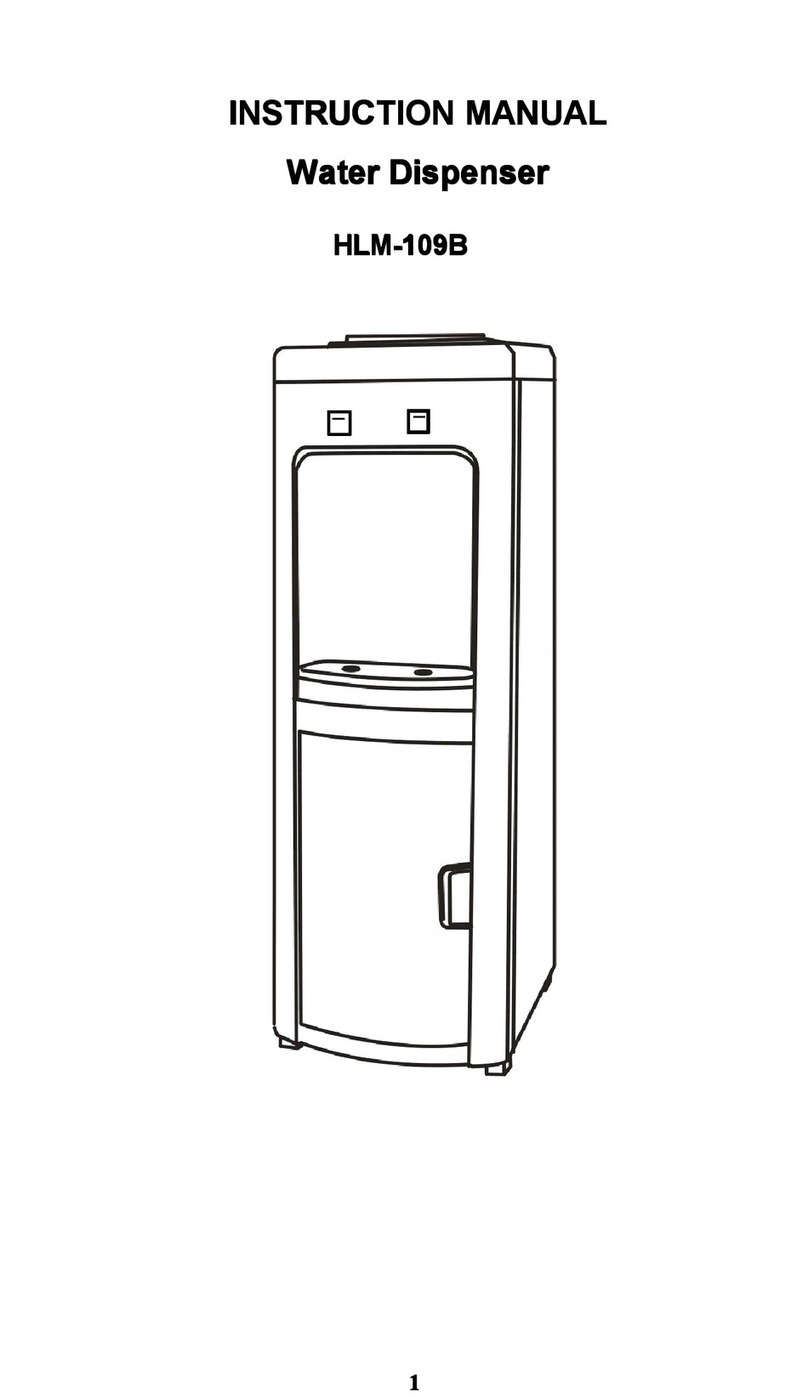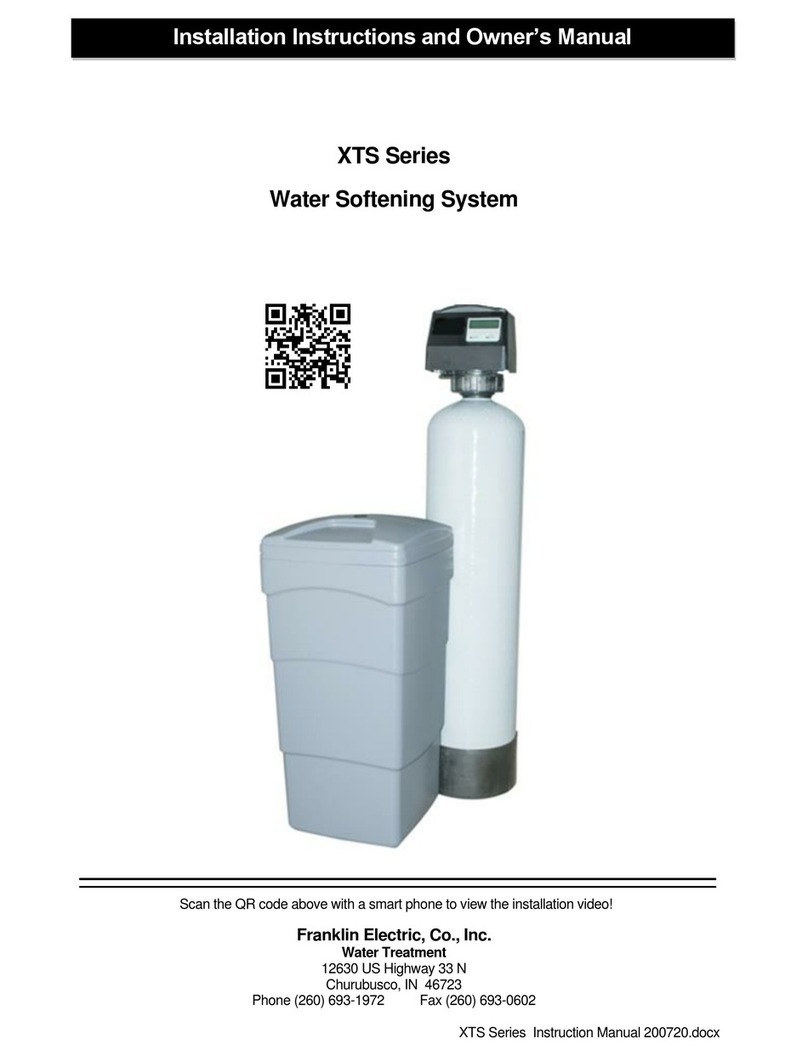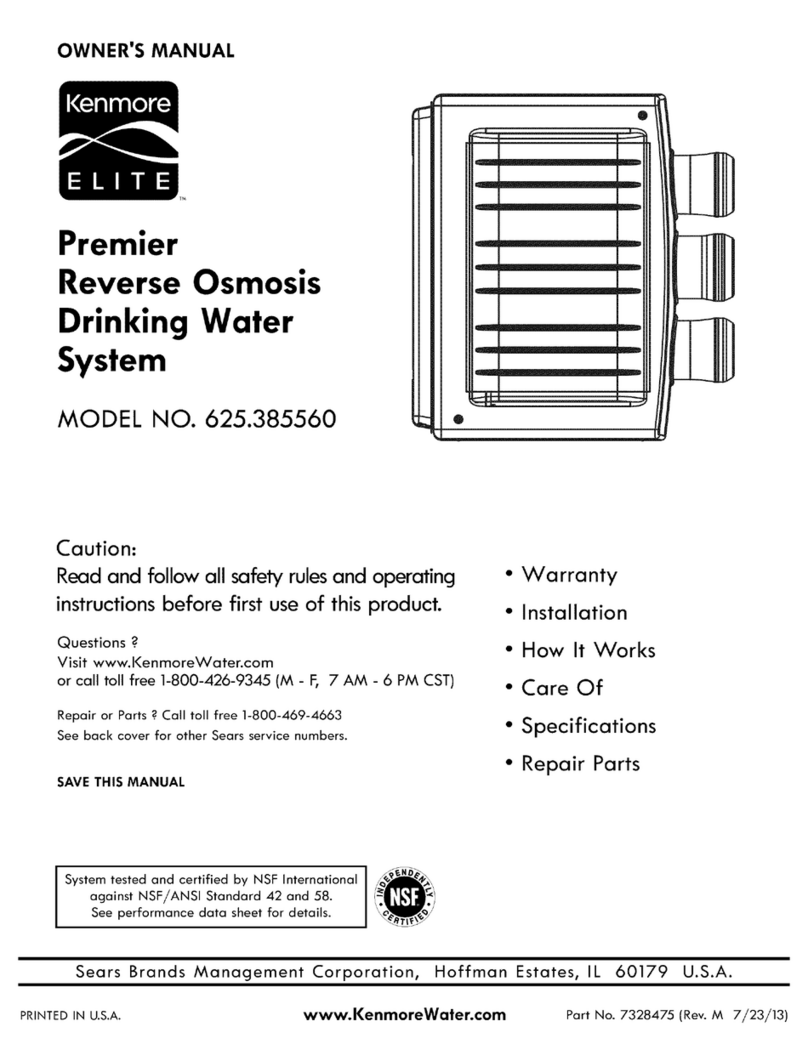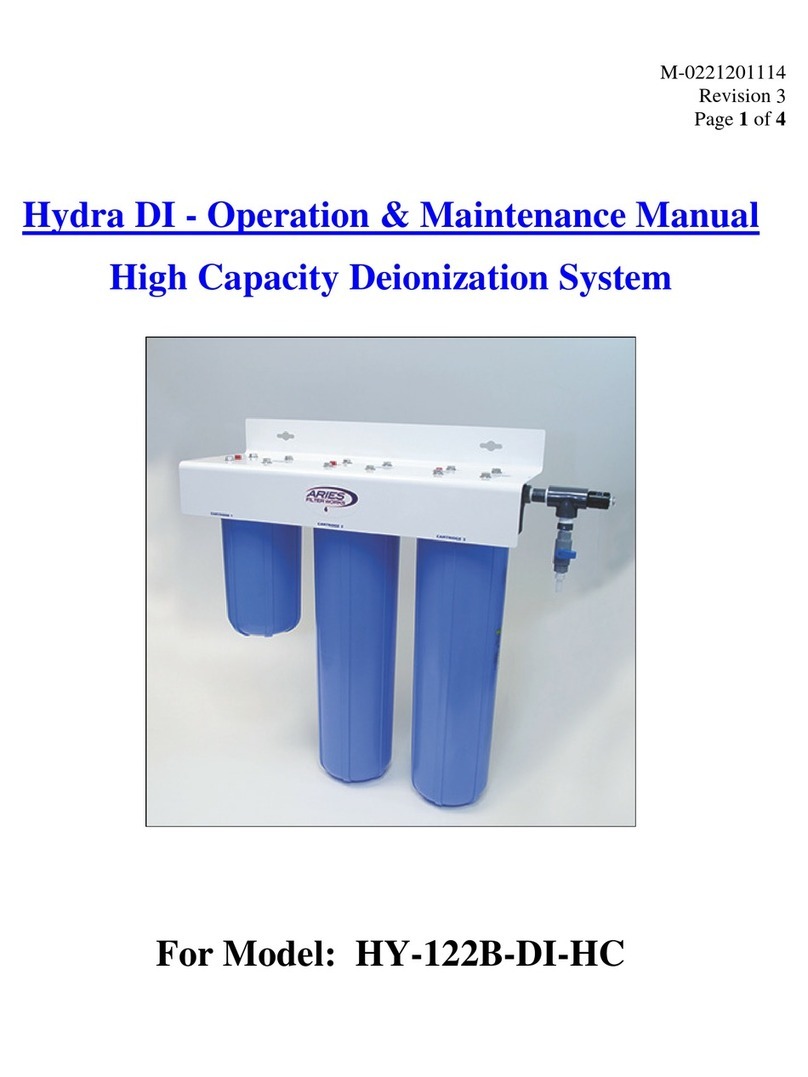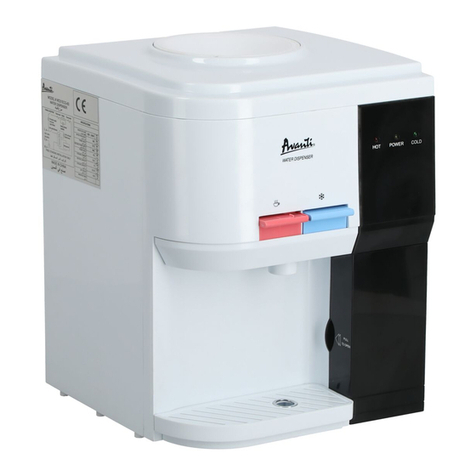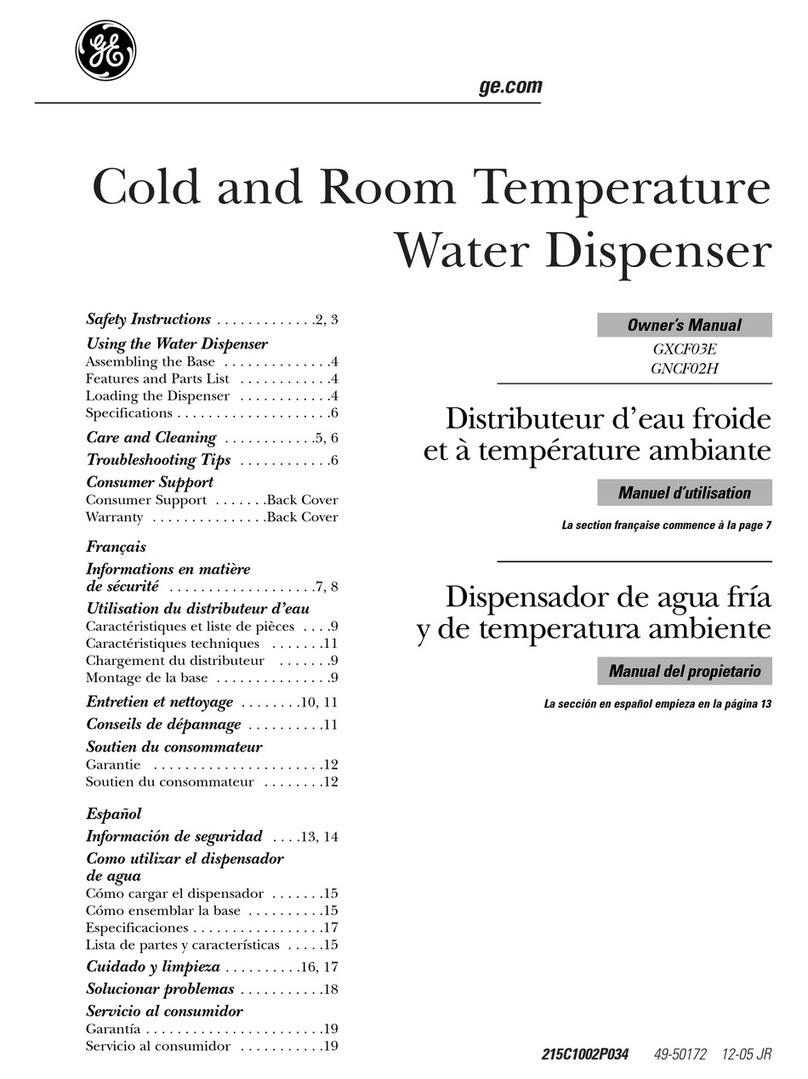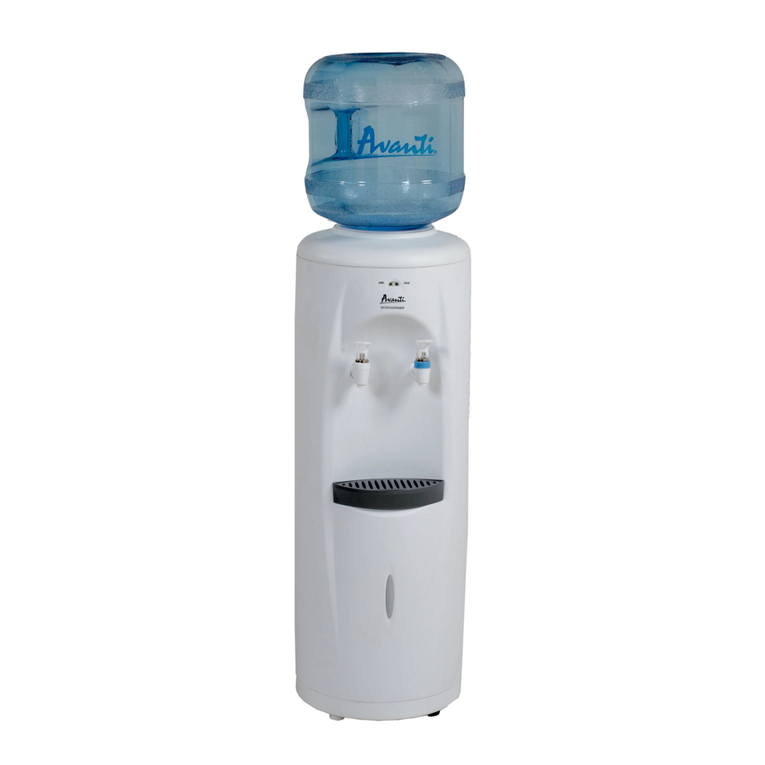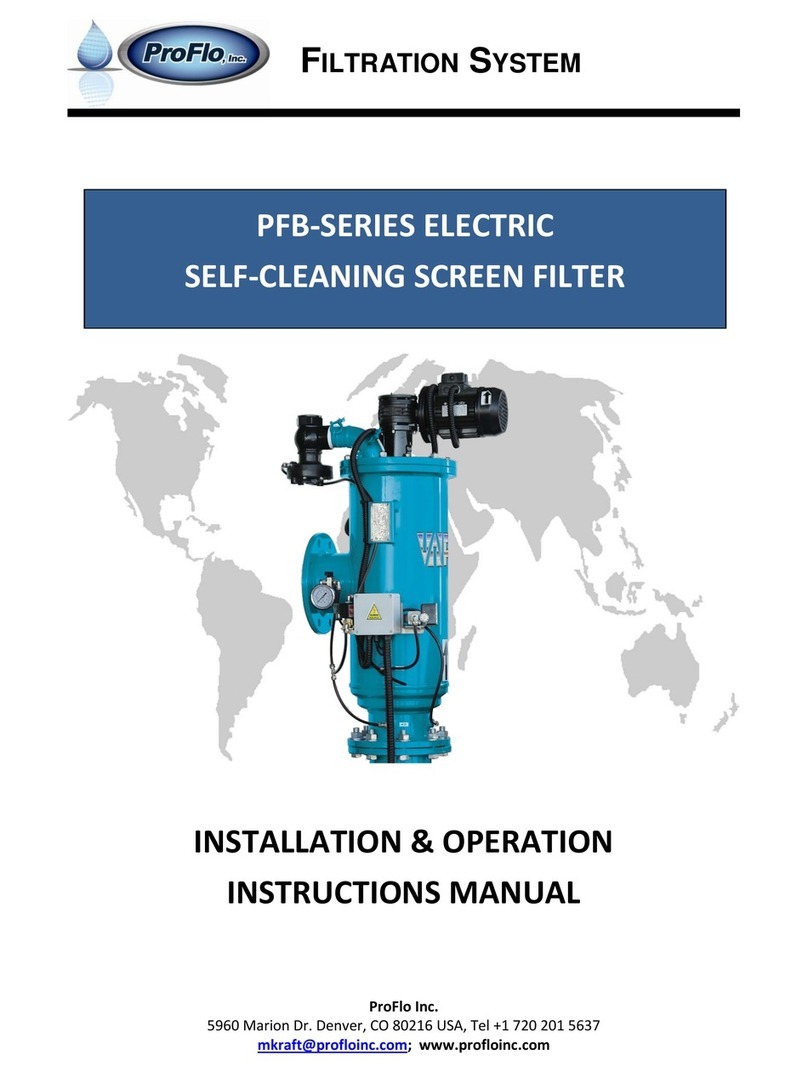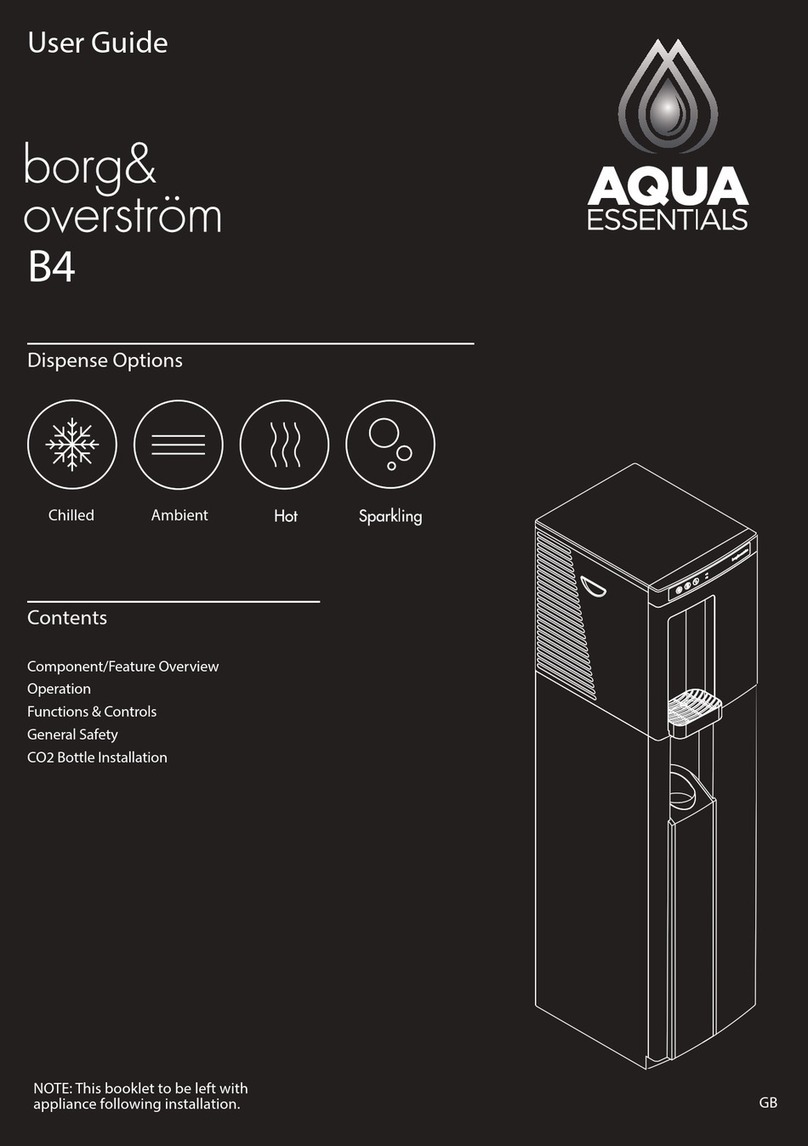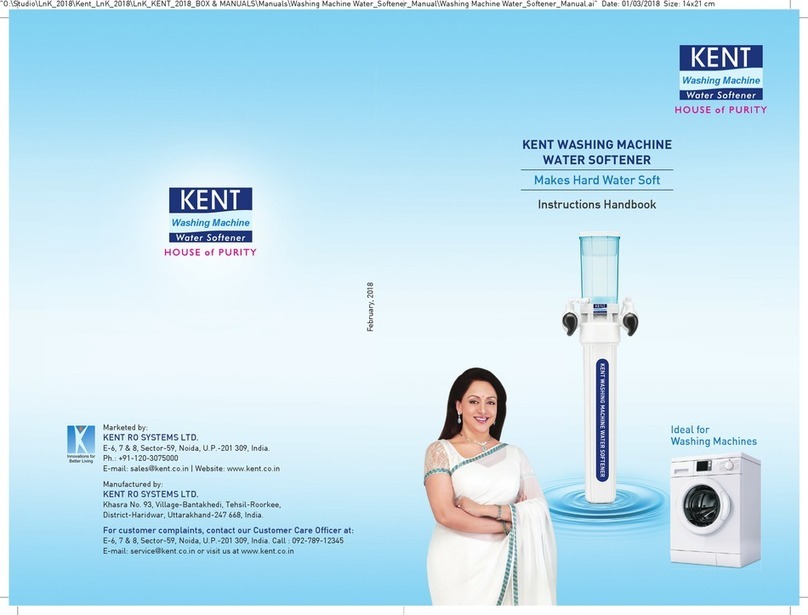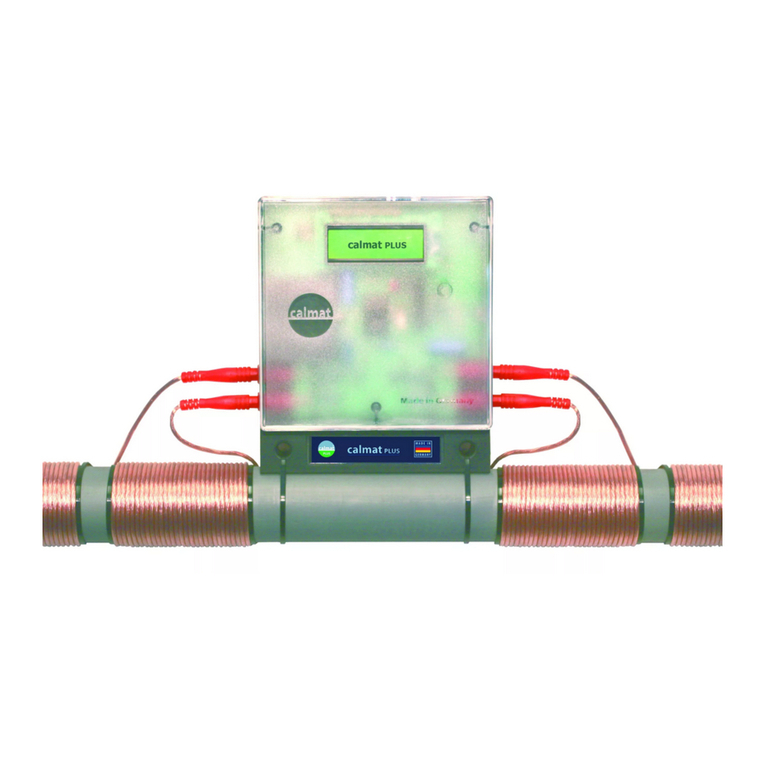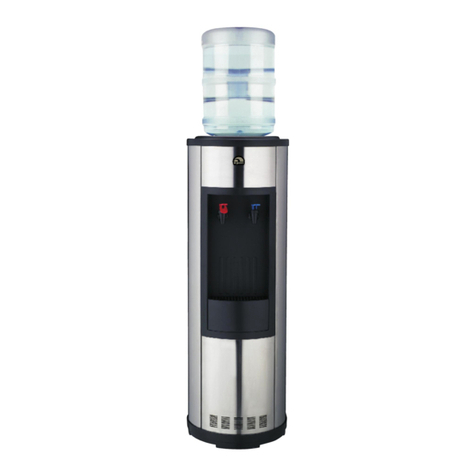2
Description of the softener
The softener system includes two mineral tanks (with gravel, distributor and softener resin), one brine tank (with
salt shelf {some models}, brine well, brine tank lid and safety brine valve), and a twin alternating, meter initiated,
digital, backwashing control valve with bypass and brine line.
Successful Application
Softeners are designed to remove hardness minerals (calcium and magnesium) from water by the process of
ion exchange. They may also remove small amounts of “clear water” iron (2 ppm or less). Softeners are not
designed to remove “red water” iron or bacterial iron. If greater levels of iron, “red water” or iron bacteria are
present, an iron filter must precede the softener. Softeners are not designed to remove particulates. If there is
any sediment or turbidity present in the water, a backwashing filter with appropriate media must precede the
softener. Only specialty tannin softeners are designed to remove tannins and the yellow to tea color from water.
Softeners will not reduce hydrogen sulfide (“rotten egg” odor).
Time of Regeneration
Periodically the control valve will go through regeneration. Regeneration is factory preset to 2:00 A.M. The time
of regeneration may be changed if needed (see programming procedures on page 7).
Location Considerations
The proper location to install the softener will ensure optimum performance and satisfactory water quality. The
following factors should be considered in selecting the location of this system.
1. Thesoftenermustbe installedafterthepressuretank (privatewellsystemonly). Operatingpressure
of the softener must be limited to within 25 –100 psi range.
2. The softener should be installed after any iron filter and/or other backwashing filter.
3. If chlorine is present in the supply water a whole house carbon filter (CS-1 or other backwashing
carbon filters or DF non-backwashing carbon filters.) should be installed before the softener.
4. The system must not be subject to freezing temperatures
5. Ensure that any in-line filter installed prior to the softener does not restrict the flow or pressure
required to backwash the softener.
6. The system should be installed as close as possible (preferably within 15’) to an adequate floor or
laundry drain capable of handling the backwash cycle volume and flow rate (refer to unit
specifications on pages 15-16). An air gap should be provided between the drain line and plumbing
drain.
7. All water conditioning equipment should be installed at least 10’ prior to the water heater. Water
temperaturesexceeding100°Fcandamagetheinternalcomponentsofthecontrolvalveandmineral
tank. An expansion tank may need to be installed in the line to the water heater to allow for thermal
expansion and comply with local plumbing codes.
8. Appliances requiring extended periods of continuous or high flow water use (i.e., geothermal heat
pumps,swimmingpools,lawnirrigation,outsidehosebibs,etc.)shouldbypassallwaterconditioning
equipment unless the equipment has been specifically designed for that purpose.
